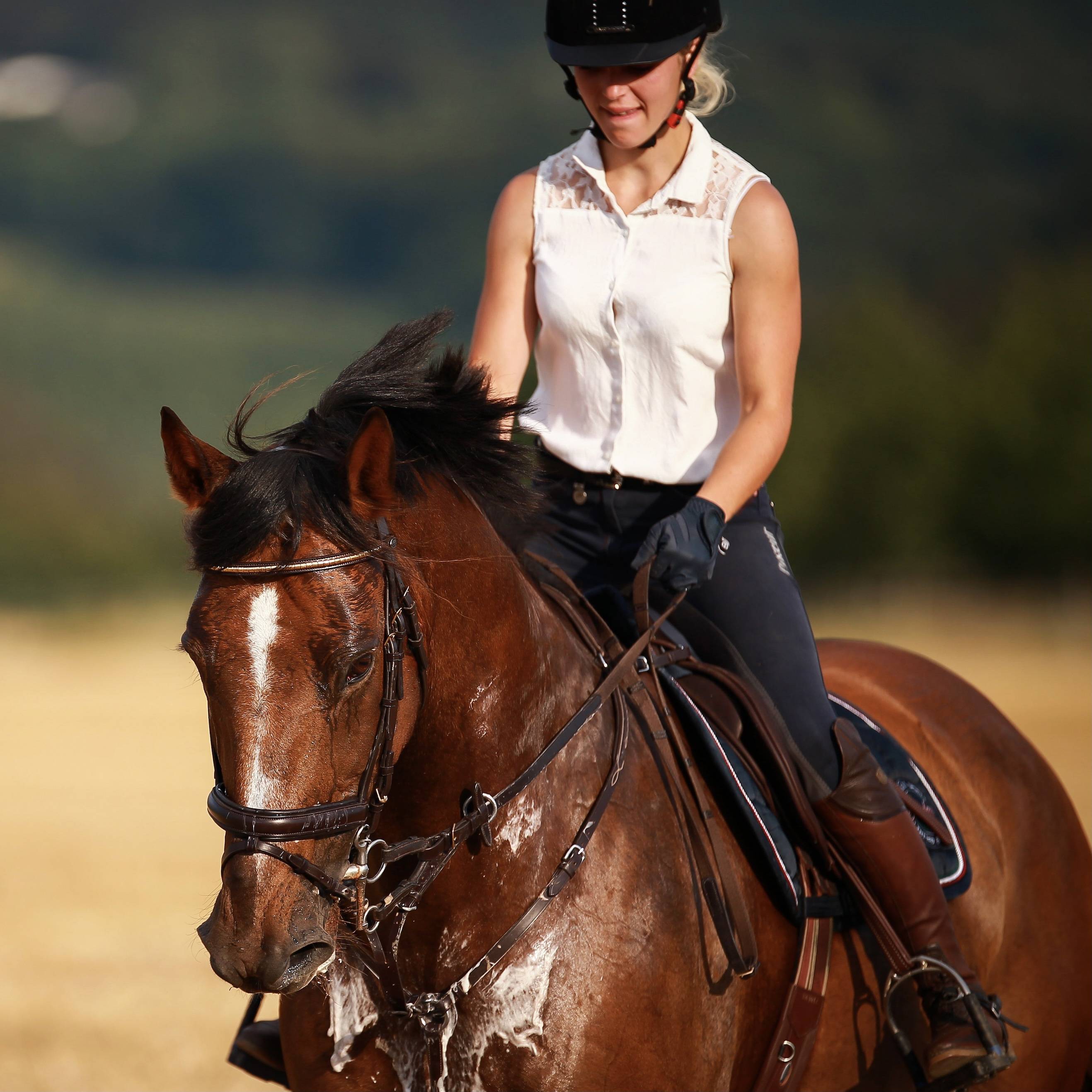If You're Hot, Your Horse is Hotter
Nobody told the weather that summer didn't officially start until Sunday, the 20th of June. As of mid-June, a heatwave was predicted to scorch Britain through July. The CCI5*-L international eventing competition in Luhmühlen Germany kicked off in searing heat, and parts of California saw the mercury shoot above 43°C.
Almost everywhere, hot weather is arriving more often through the year and the "summer" season -- weather wise -- starts earlier and sticks around longer.
Whenever summer temperatures arrive, a simple statement applies: If you're hot, your horse is hotter!
Here's some tips for keeping your horse comfortable and healthy in the heat.
1. Schedule Smart: Gauge ride times and intensity to the temperature. Exercise in cooler parts of the day and choose a shady trail stroll over a jump school if it's excessively hot.
2. Maintain fitness & weight: As with people, a horse in good fitness and weight for its life stage and workload is best equipped to handle the extra physiological stresses that come with high heat.
3. Hydrate: Provide cool, clean water at all times, including during breaks in sustained exercise sessions. Monitor intake to prevent dehydration: the average horse drinks between five and 10 gallons of water a day, more with exertion and hot weather.
Normally enthusiastic drinkers might be less so while travelling or at competitions. Know their baseline intake at home and experiment to determine what additives -- electrolytes or honey, for example -- your horse seems to like and travel with them to whet his thirst.
Welcome ways to get more moisture into the diet. Haygain Steamed Hay, for example, has nearly three times the water content of dry hay.
4. Provide Shade: Ideal pasture shade includes trees and open-sided shelters, so breezes help keep things cool. If no shaded paddocks, schedule turn-outs during the coolest time of the day.
5. Provide Ventilation for Stabled Horses: Capitalize on the fact that heat rises, which draws in air. Open windows, doors, skylights. Fans are good if cords and blades can be secured out the horse's reach. Maintain a low-dust stable environment so that airflow does not stir respirable particles into the horse's breathing zone: heat and humidity are hard enough on the respiratory system!
6. Stall Smart: Flooring that does not absorb heat is ideal. The foam used in Haygain's ComfortStall Sealed Orthopaedic Flooring, for example, is a closed-cell structure that prevents heat from passing through it.
Further, bacteria flourishes in hot weather, especially when combined with moisture. Regular stall cleaning and flooring that prevents the accumulation of urine at the stall base are smart steps in minimizing bacteria growth and maintaining good barn air quality to support respiratory health -- for horses and their people.
7. Careful Cooling: Horses cool down more slowly than people. That's partly due to a higher percentage of heat-producing muscle mass and a less-favourable ratio of body mass to surface area through which heat escapes.
After exercise, keep walking long enough for muscles to recover and respiratory rate to return to normal: typically between 10 to 24 breaths a minute. Hose down with cool water and scrape off excess water. Repeat. As happens when horses sweat, the evaporation of water from the skin helps lower body temperature.
8. Dress for Success: Heat usually escalates along with the annoyance of flies and other insects. Mesh blankets and masks can reduce that without making the horse hotter. Non-breathable materials -- on backs, bodies and legs, do the opposite, so pick summer horse wear carefully.




















